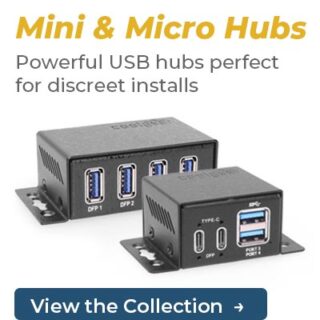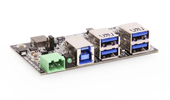Telemedicine is one of the best things that has ever happened to medical plans and outpatient care. It is often difficult to get plan members and patients to come in for appointments, especially follow-up appointments and check-ins to keep track of their recovery progress. For those in post-acute care at home or suffering from severe conditions, regular check-ups may not be a viable option. Others simply won’t make appointments or arrive for them because they don’t care to come in or cannot remember to do so.
Telemedicine allows medical care to come to the patient using a combination of wireless and USB technology. Doctors and healthcare providers both can keep tabs on patients and make sure they are recovering according to plan without having to worry when patients don’t check-in or make appointments.
In fact, with modern technology, telemedicine is more versatile and accessible than ever.
Telephone Check-Ins
The most traditional type of telemedicine is the classic phonecall. Just talking on the phone with a patient can reveal a lot to their healthcare providers. Tone and quality of voice can tell a doctor whether the patient is hoarse, if they are feeling strong, and even something of their emotional state which can be affected by their health.
From the telephone, patients can report their symptoms, ask for advice, and discuss the progress of their health plan. Doctors also have the opportunity to help patients make appointments or schedule in-home visits.
Video Conferencing
Video conferencing is the natural evolution of the telephone check-in because it solves many of the problems doctors have encountered treating patients over the phone. Both patients and doctors use USB cameras and microphones to connect over cloud video software. Doctors can examine skin tone, clarity of the eyes, and match visual to audio cues to determine how a patient at home is progressing. They can let a patient know when they seem to be at risk of becoming ill or relapsing and they can confirm that patients are genuinely doing better not just say they are doing better.
Video conferencing through cloud platforms has transformed telemedicine and is now the primary way to provide medical consultations and care from a distance.
Live Chat Consultation
However, non-video and even non-voice communication has its own essential uses in modern telemedicine. Live chat has become an incredibly useful way for patients, their families, and their care providers to stay in touch with doctors and health plans. Live chat provides a quick, easy, and low-connectivity way to ask questions and get answers.
Through live chat, patients can get updates on their existing treatment and recovery plan, order their medications, and schedule other services. This is a great telemedicine channel not for actual check-ins, but for all the little communications that patients often put off until they make it to an appointment. Live chat is ideal for helping patients stay on top of an ongoing plan and prevent self-neglect caused by procrastination or lack of answers.
Smart Home Communication
The cherry on top of cutting-edge telemedicine is smart home communication. With the right setup, a patient’s voice-controlled smart home can connect through their phone numbers, internet phones, and health plan mobile apps to keep patients connected without even picking up a device or sitting at a computer. Smart home telemedicine has an incredible amount of potential, most of which has yet to be realized. Patients who are bedridden can talk to their doctors without getting up, and health plan providers can make calls without patients having to reach the phone.
In fact, with a smart homes’ other features like timely reminders and as a voice information resource, they can be programmed to provide patients with automated telemedicine assistance as well as connection to doctors and care providers.
Telemedicine has a long history of helping outpatients manage their own care and doctors stay connected with their patients outside of appointments. And with modern technology, the quality and variety of telemedicine care continues to expand and evolve. Contact us today for more medical communication insights and ways to upgrade your medical practice with USB communication technology.




















